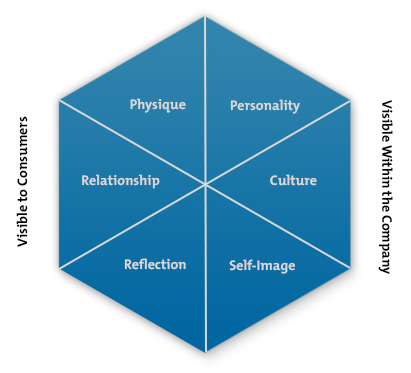Kapferer's Brand Identity Prism
Identifying Your Brand's Voice

© iStockphoto
Mac99
Build a strong identity for your brand to encourage customer commitment.
When you stop and think about Apple® products, what comes to mind? Creativity? Innovation? Style?
What about BMW®? You might instantly think of luxury, speed, and performance. Or, perhaps you imagine yourself behind the wheel of one of their cars, whipping around turns and experiencing the thrill of racing down a highway at top speed.
Brand identity is a big part of the success of Apple and BMW. They've created and sustained specific and emotional ideas around their brand, and these ideas resonate strongly with their customers.
A successful brand identity reflects people's values and beliefs, and how they would like to see themselves. However, without a clear and meaningful identity, a brand can quickly fade away.
Kapferer's Brand Identity Prism identifies six key things that you need to think about when developing a brand identity. In this article, we'll look closely at the model, and we'll discuss how you can apply each element to build a strong identity for your brand.
Overview
Jean-Noël Kapferer, professor of marketing strategy at the HEC Graduate School of Management in France, developed the Brand Identity Prism and published it in his 1996 book, "Strategic Brand Management."
The Brand Identity Prism identifies six key elements that you should consider when building your brand.
Your customers' own experiences and history shape the way that they see your brand. They're constantly looking for clues about what your brand stands for, and how it will make them feel if they commit to it.
These clues are represented within the prism's six sections: physique, relationship, reflection, self-image, culture, and personality. You can see these in figure 1, below.
Figure 1: Kapferer's Brand IdentityPrism

The prism is also divided in half vertically. Consumers can see the three external elements on the left (physique, relationship, and reflection), but the three elements on the right (self-image, culture, and personality) are internal – they're incorporated within the brand's spirit. (We'll look at the six sections of the prism in more detail, below.)
Both sides must be in place for a brand to create a strong identity, and, for a brand to remain strong, it must stay true to that identity.
Uses
The Brand Identity Prism has several important uses.
First, you can use the prism as a checklist to identify your brand's strengths and weaknesses.
You can also use the model to build a brand's identity from the ground up, by structuring your marketing messages and your strategic planning correctly.
Applying the Model
Let's look at each of the six elements in detail.
1. Physique
The foundation of your brand's identity lies in its "physique." The physical characteristics and main purpose of the products or services within your brand evoke certain images, feelings, and ideas in consumers.
For example, the physique of Apple products is a sleek, aesthetic design, which is instantly recognizable. In addition to consumer companies, service organizations also have a physique. For example, American Express® has a physique of high class, superior quality, and excellent standards.
Look at the products or services within your brand. What do they look like? What images and emotions do they evoke? And are those images and emotions aligned with the identity that you want for the brand?
2. Relationship
It's essential to understand the relationship between your customer and your brand, and to know how strong the relationship is.
You can build this relationship around a product and what it means. For example, Gerber® baby food is, at heart...
Access the Full Article
This article is only available in full within the Mind Tools Club.
Learn More and Join TodayAlready a Club member? Log in to finish this article.


